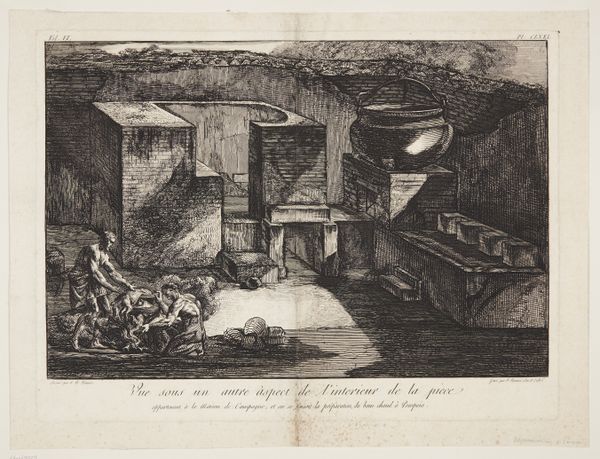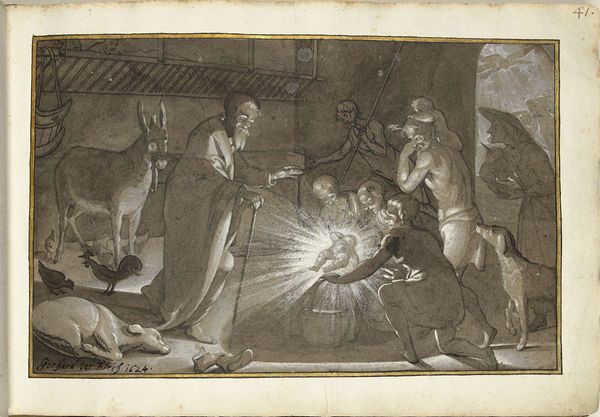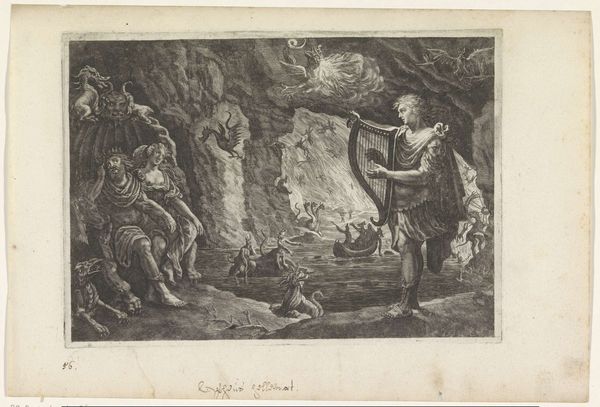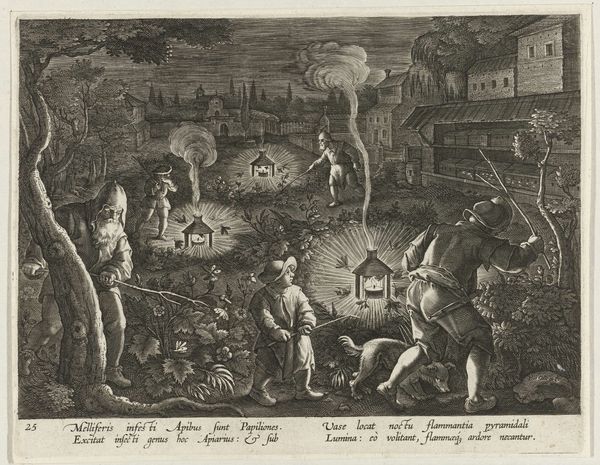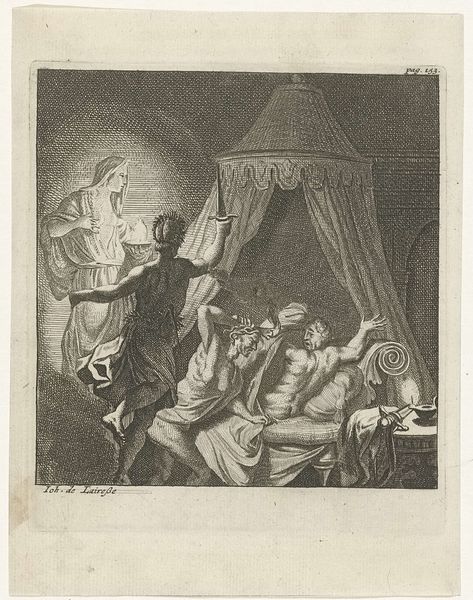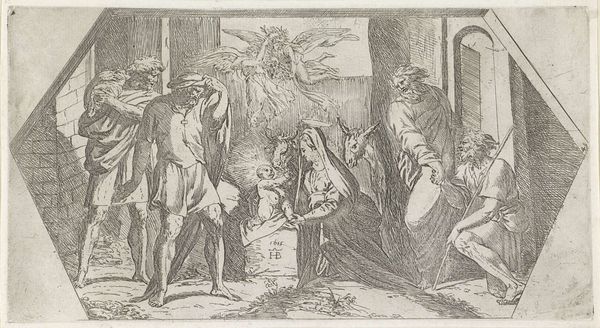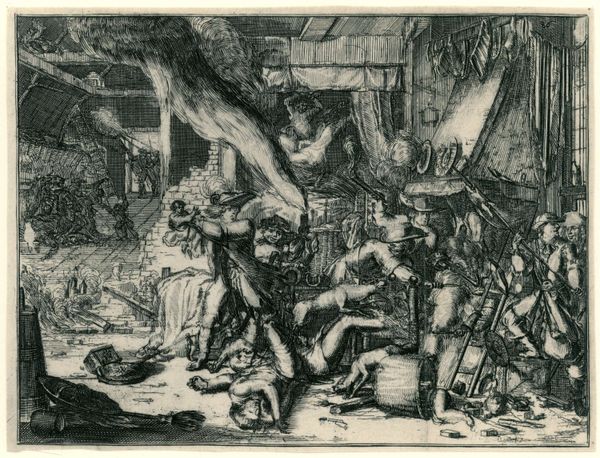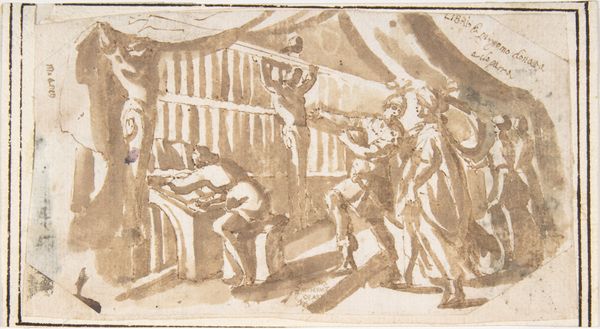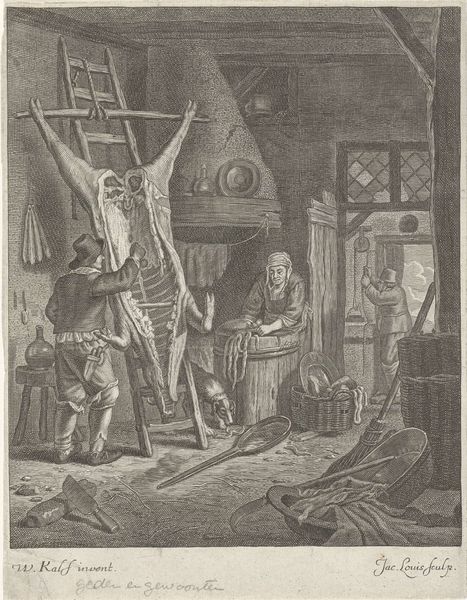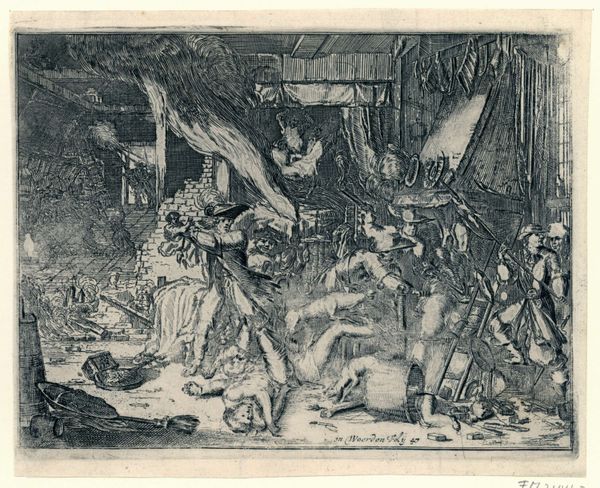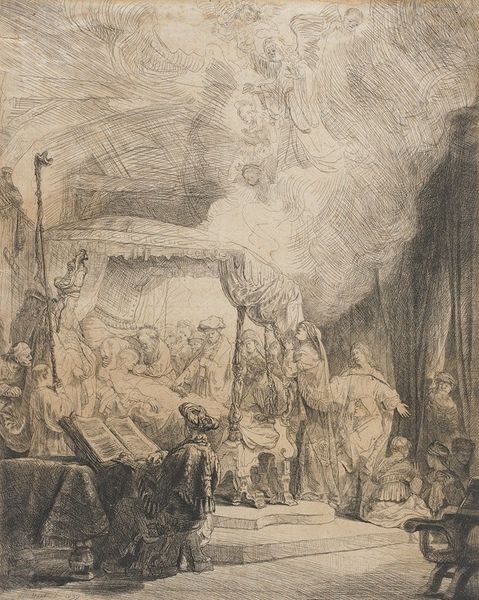
print, etching
#
allegory
# print
#
etching
#
figuration
#
momento-mori
#
romanticism
#
history-painting
#
grotesque
Dimensions: height 535 mm, width 670 mm
Copyright: Rijks Museum: Open Domain
Curator: Well, here we have Francesco Piranesi's "Soldatenkazerne te Pompeï," or "Barracks of Soldiers at Pompeii," an etching from 1806 held here at the Rijksmuseum. My initial reaction is just…eerie. Editor: Eerie is right. The dramatic lighting, the skeletal remains – it certainly evokes a sense of dread. The etching seems to depict a scene of petrified remains alongside figures in action; can we interpret that to the moment of discovery in Pompei? Curator: Exactly. Consider Piranesi's own context: Italy in the early 19th century, deeply captivated by its classical past. The rediscovery of Pompeii became a lens through which contemporaries interpreted their place in a political history under constant reconstruction and subject to rapid imperial designs. Think about the labour involved in excavating these sites and producing artworks, like this etching, aimed at popular consumption in Europe. The very material – paper and ink – connect directly to this economy of knowledge. Editor: Yes, that dissemination is important. This image isn't just a passive reflection of a past moment; it actively participates in shaping the narrative. The "Memento Mori" tradition looms large here as well. It is intended as moral device and reminder of our mortality. In its artifice and theatrical rendering, it makes death spectacular. Curator: And notice the detail of the printing process, particularly how light and shadow are built through line density. Also, this print wouldn't exist outside a system of patronage and viewership. Who were the audiences, what did they expect to experience when presented with such imagery? I suppose it caters to popular appetite for a bit of morbid sentimentality in a spectacular framing. Editor: Perhaps. And the grotesque skeletons inhabiting these former living quarters serve as a potent, politically charged symbol. The past's ability to terrify through scale. By bringing together figuration with such symbolic meaning in relation to death, Piranesi suggests death's hold on lived space. Curator: Precisely. This image showcases how art can function as a material vehicle for transmitting ideas about the relationship between life, death, and historical interpretation. It makes you consider production in parallel with historical interpretation, doesn’t it? Editor: Indeed. By studying prints like this, we confront how images and processes intertwined with power and our fascination for a grander understanding of existence.
Comments
No comments
Be the first to comment and join the conversation on the ultimate creative platform.
